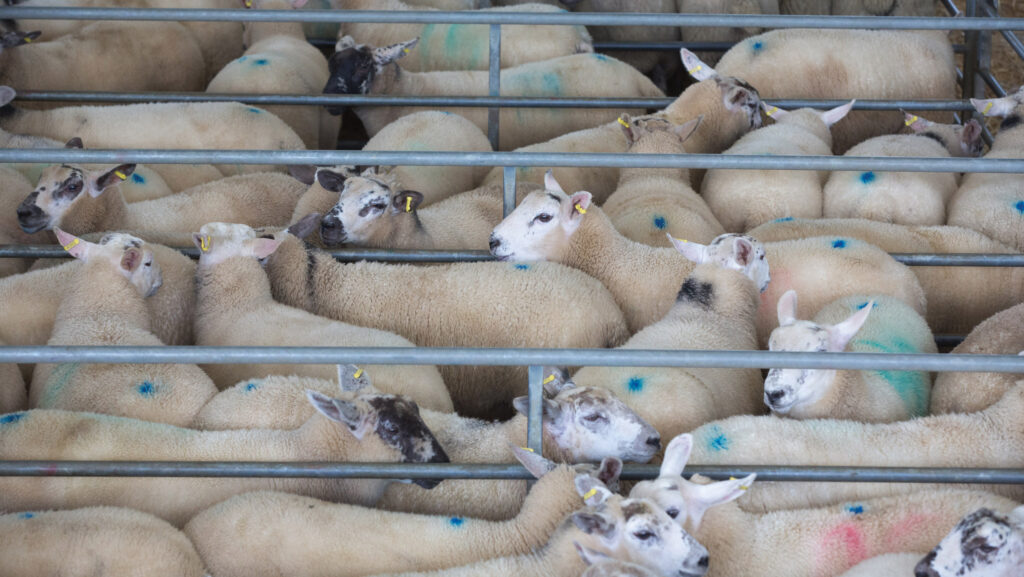Lambs hold above £6/kg as tight supply helps steady falls
 © Tim Scrivener
© Tim Scrivener The highs of up to £200/lamb witnessed earlier this year may appear a distant memory, however, after a period of decline, lamb prices have started to stabilise again.
New-season lambs averaged at 645.6p/kg deadweight for the week ending 13 July, with trade still slightly above last year’s levels.
Spring lambs have started to come through in greater numbers, but by historic standards supply remains very tight.
See also: Welsh farmers losing money with ‘out of spec’ carcasses
Defra figures showed that UK clean sheep slaughterings were down by 19% in June compared with year earlier levels, while mutton and lamb production totalled 20,000t, down by 18% year-on-year.
Izzy Shohet, red meat analyst at AHDB, told Farmers Weekly that the sheep trade had seen some significant price pressure in the past month with GB deadweight prices down by more than £2/kg since the end of May.
“The market has been underpinned by lower domestic supply and firm consumer demand, which alongside the earlier timing of religious festivals and strong import levels have exaggerated typical seasonal price patterns so far this year,” she added.
Live ring
The liveweight SQQ for new season lambs stood at 302p/kg in the week to 13 July for auction marts in England and Wales. Meanwhile, cull ewes averaged £110.60/head.
Auctioneers say trade for finished lambs has been stronger in the past week across all weight categories, following a weaker spell.
Grant Anderson, commercial sales manager at Harrison & Hetherington, said: “It’s been a perfect combination of key celebrations rolling into one another and we’ve seen lambs go for £50-£100/head more than we’d ever imagined, but there’s now a bit of a lull in the trade so buyers are looking not for numbers but for quality.
“This is hard when at this time of year farmers are keen to get lambs off farm to get much-needed income and to avoid the cost of feeding them to reach target weights, especially after another cold and wet lambing, but we are just not seeing the prices unless they are well finished.
“Lambs should be at least 43kg to get the maximum returns.”
Mr Anderson suggested that there could be fewer lambs available this year due to the bad weather and disease affecting lambing, which may mean lower supply again next year.
“Some farmers have taken advantage of the high cull price, and the opportunity to farm less sheep. They are watching the market and the impact of the cost of living and taking a hard look at their businesses.
“We are seeing some key strategic decisions being made, some of which include reducing their numbers, and this means supply will be tight.”
Outlook
Lamb numbers were down by 9.5% in the year to June, which will continue to set a strong base in the market, according to Ms Shohet.
“As we look to the second half of the year, we expect to see a slight increase in lamb kill when compared to the same period in 2023.
“However, with the wet, difficult spring alongside disease issues in early lambers causing a number of challenges, the new crop is likely to be later coming forwards, with greater numbers pushing into August and September.”
Imports
Tighter supplies and higher prices so far this year have led to increased competition from imports, with larger volumes coming from both Australia and New Zealand.
There has been a 49% increase in the value of lamb exports from New Zealand, with figures from Beef and Lamb NZ estimating trade to GB in the nine months to June 2024 at more than NZD$302.8m (£141m).
